SYNDESMOLOGY
Connections of the spinal column
- Intervertebral symphysis
- Arc joints
- Bundles of the spinal column
- Lumbosacral joint
- The sacrococcygeal joint
Connections of the skull with the atlant and the atlas with the axial vertebra
Chest joints
Synovial connections of the skull
Joints of upper limb
- Breast-and-clavicular joint
- Acromioclavicular joint
- Shoulder joint
- Elbow joint
- The distal radiovolume joint
- Wrist joint
- Intermittent and mid-joint joints
- The joint of the pea
- Pseudo-metacarpal joints
- Inter-articular joints
- Metacarpophalangeal joints
- Interphalangeal joints of the hand
Joints of lower limb
Discontinuous joints of bones - joints , or synovial joints, articulations synoviales, are the most common type of articulation of human bones, creating conditions for high mobility of his body. The joint is called simple, articulatio simplex, if two bones are involved in its formation, and a complex, articulatio composita, if it is formed by three bones or more.
Each joint has the obligatory structural elements, without which the joint of bones can not be referred to the joints, and the auxiliary formations that determine the structural and functional differences of one joint from the other. Mandatory joint elements include articular cartilage covering the articular surfaces; Articular capsule and articular cavity.
Articular cartilages, cartilago articulares, are usually constructed from hyaline cartilage, less often fibrous. These cartilages cover the surface of the bones with which the bones that are articulated face each other. Consequently, one surface of the articular cartilage is fused to the surface of the bone covered by it, and the other is free to stand in the joint.
The joint capsule, capsula articularis, surrounds the articulated ends of bones in the form of a closed cover and, without passing to the articular surfaces, extends into the periosteum of these bones. The capsule is constructed of fibrous connective tissue and consists of two layers - membranes. Outer, fibrous, membrane, membrana fibrosa (stratum fibrosum), is constructed of dense fibrous connective tissue and performs a mechanical role. From the inside, it passes into the synovial membrane, membrana synovialis (stratum synoviale). The synovial membrane forms synovial folds, plicae synoviales. This membrane secrete synovial fluid (synovia), synovia, which moistens the articular surfaces of bones, nourishes the articular cartilage, performs the function of a shock absorber, and also changes the mobility of the joint as its viscosity changes. The working surface of the membrane increases not only due to synovial folds, but also due to synovial villi, vilii synoviales, facing the joint cavity.
The articular cavity, cavitas articularis, is a narrow closed slot, bounded by the junction surfaces of the bones and the joint capsule and filled with synovial fluid. The cavity has no messages with the atmosphere.
Auxiliary joints are diverse. These include ligaments, ligamenta; Articular discs, disci articulares; Articular menisci, menisci articulares; Articular lips, labra articularia.
Joint ligaments are bundles of dense fibrous connective tissue that strengthen the joint capsule and limit or guide the movement of bones in the joint. With respect to the joint capsule, non-capsular ligaments are distinguished, ligg. Extracapsularia, located outside the joint capsule, capsular ligament, ligg. Capsularia, located in the thickness of the capsule, between its fibrous and synovial membranes, and intracapsular ligaments, ligg. Intracapsularia, inside the joint. Bundles have almost all joints. Extra-capsular ligaments are interlaced in the outer parts of the fibrous layer of the capsule; Capsular ligaments are a thickening of this layer, and the intracapsular ligaments are intraarticular in position, but are covered by the synovial membrane that separates them from the joint cavity.
The joint discs are layers of hyaline or fibrous cartilage, wedging between the articular surfaces of the bones. They are attached to the capsule of the joint and divide the joint cavity into two floors. Disks increase the correspondence (congruence) of articular surfaces, and consequently, the volume and variety of movements. In addition, they serve as shock absorbers, reducing shocks and tremors during movement. Such disks are available, for example, in the sternoclavicular and temporomandibular joints.
Joint menisci, unlike disks, are not solid cartilaginous plates, but crescent formations of fibrous cartilage. Two meniscus, right and left, are in each knee joint; They are attached by the outer edge to the capsule, closer to the tibia, and the sharp inner edge freely stand in the joint cavity. Menisci diversify movements in the joint and serve as shock absorbers.
The joint lip is formed by a dense fibrous connective tissue. It is attached to the edge of the articular cavity and deepens it, increasing the correspondence of the surfaces. The lip is turned into the joint cavity (humeral and hip joints).
The joints differ in the shape of articular surfaces and the degree of mobility of the articulating bones. In the form of articular surfaces, globular (cup-shaped) joints are distinguished, articulationes spheroideae (cotylicae); Flat; Ellipsoidal, articulationes ellipsoideae (condylares); Saddle, articulationes sellares; Ovoid, articulationes of ovoidales; Cylindrical, articulationes trochoideae; Blocky, ginglymus; Condylar, articulationes bicondylares.
The shape of the joint surfaces depends on the nature of the movement in the joint. Spherical and flat joints, in which the generatrix is represented by a segment of a circle, allow the movement around three mutually perpendicular axes: frontal, anteroposterior (sagittal) and vertical. So, in the shoulder joint, spherical in shape, flexion (flexio) and extension (extensio) are possible around the front axis, with the motion occurring in the sagittal plane; Around the anteroposterior axis - abduction (abductio) and reduction (adductio), the motion takes place in the frontal plane. Finally, rotation (rotatio) is possible around the vertical axis, which includes turning inside (pronatio) and outward (supinatio), and the rotation itself occurs in the horizontal plane. These movements in the flat joints are very limited (the flat articular surface in this case is regarded as a small segment of a circle of large diameter), and in the globular joints the movements are performed with a large amplitude and are supplemented by circular guidance (circumductio), in which the center of rotation corresponds to the spherical joint, and The moving bone describes the surface of the cone.
Joints in which motion around one of the three axes is excluded and possible only around two axes, are called biaxial. Biaxial refers to ellipsoidal joints (for example, wrist joint) and saddle (for example, carpometacarpal joint of the first finger of the hand).
Uniaxial cylindrical and block joints are considered. In the cylindrical joint, the generator moves parallel to the axis of rotation. An example of such a joint is the atlanto-median medial joint, the axis of rotation in which passes vertically, through the cervical vertebra II, and also the proximal radiophilic joint.
A variety of uniaxial joint is block-shaped, in which the generator is inclined with respect to the axis of rotation (as it were beveled). Such joints include the brachial and interphalangeal joints.
The condylar joints, articulationes bicondylares, are mutated ellipsoidal joints.
In some joints, the skeletal system of motion is possible only at the same time as movements in adjacent joints, ie, anatomically isolated joints are united by a common function. Such a functional combination of joints must be taken into account when studying their structure and analysis of the structure of movements.

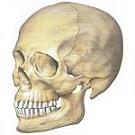
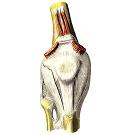
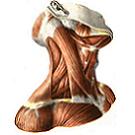
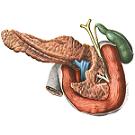
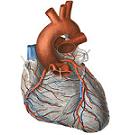

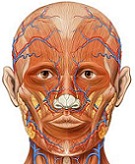

Comments
When commenting on, remember that the content and tone of your message can hurt the feelings of real people, show respect and tolerance to your interlocutors even if you do not share their opinion, your behavior in the conditions of freedom of expression and anonymity provided by the Internet, changes Not only virtual, but also the real world. All comments are hidden from the index, spam is controlled.